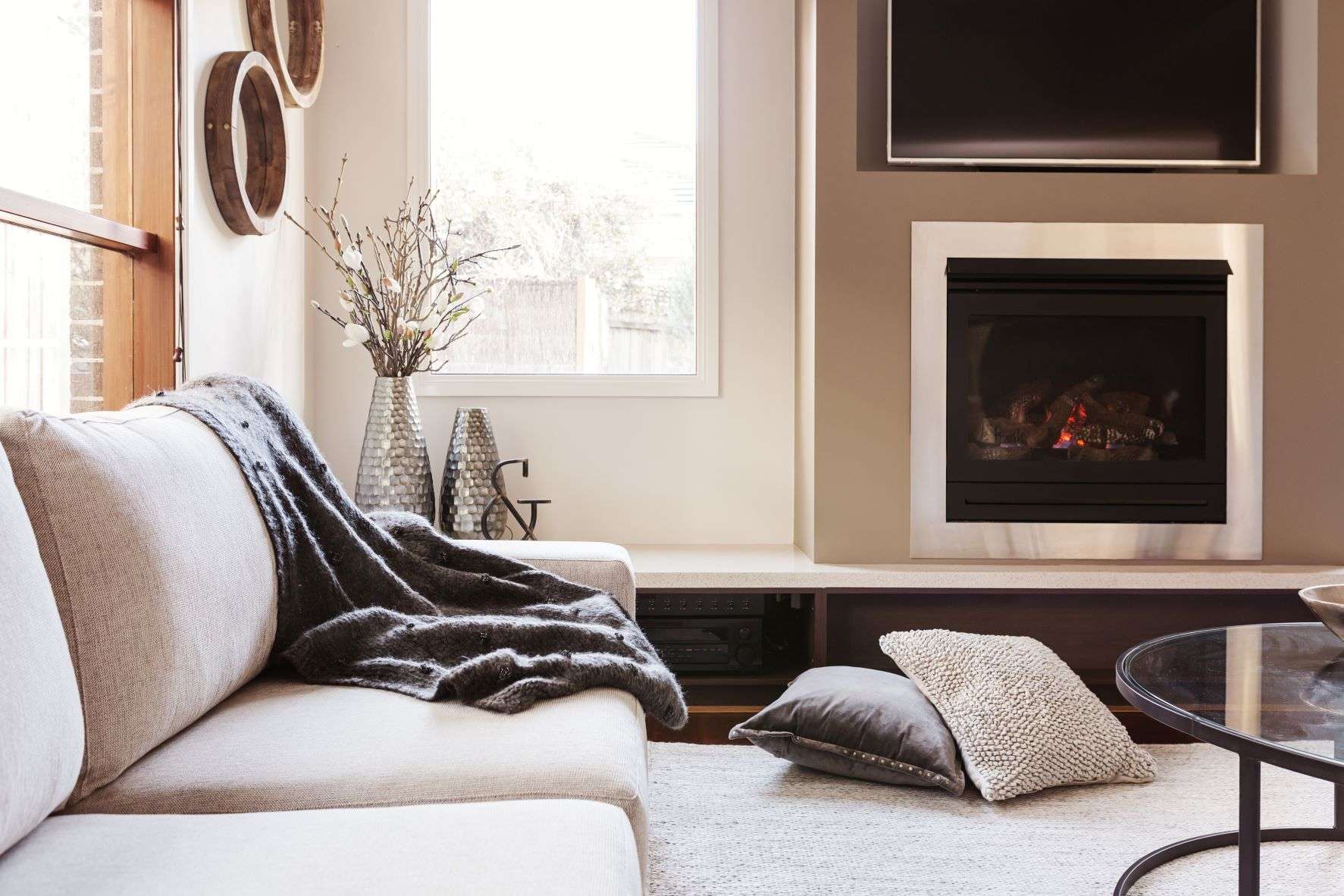

Articles
Why Does My Gas Fireplace Keep Going Out
Modified: March 23, 2024
Discover articles on why your gas fireplace keeps going out and learn how to troubleshoot and fix this common issue for a cozy and uninterrupted fire.
(Many of the links in this article redirect to a specific reviewed product. Your purchase of these products through affiliate links helps to generate commission for Storables.com, at no extra cost. Learn more)
Introduction
Gas fireplaces are a popular choice for homeowners looking to add warmth and ambiance to their living spaces. With the flick of a switch or the push of a button, you can enjoy the coziness and beauty of a fire without the hassle of wood or the mess it creates. However, what happens when your gas fireplace keeps going out? It can be frustrating and leave you longing for a reliable heat source during the chilly months.
There are several possible causes for a gas fireplace going out, ranging from minor issues to more serious problems. In this article, we will explore the common reasons why your gas fireplace may keep going out and provide troubleshooting steps to help you fix the problem.
Key Takeaways:
- Keep your gas fireplace running smoothly by checking the pilot light, inspecting the thermocouple, and ensuring proper ventilation. Regular maintenance and timely repairs will ensure a cozy and reliable fire in your home.
- Address issues with gas supply, burners, ignition switch, and safety sensor to maintain a safe and efficient gas fireplace. Prioritize safety and consult a professional for complex troubleshooting and repairs.
Read more: Why Does My Gas Fire Pit Keep Going Out
Possible Causes for a Gas Fireplace Going Out
1. Pilot Light Issues: The pilot light is responsible for igniting the main burner in your gas fireplace. If it goes out, the fireplace will not stay lit. Common causes for a pilot light going out include a faulty thermocouple or a blocked or dirty pilot assembly.
2. Thermocouple Problems: The thermocouple is a safety device that detects whether the pilot flame is lit. If it fails to sense the flame, it will shut off the gas supply, causing the fireplace to go out. A malfunctioning or faulty thermocouple can prevent the pilot light from staying lit.
3. Gas Supply Issues: If there is a problem with the gas supply to your fireplace, it may cause the flame to go out. This could be due to a closed or partially closed gas valve, low gas pressure, or an issue with the gas line.
4. Ventilation Problems: Adequate ventilation is crucial for the proper functioning of a gas fireplace. If there is insufficient airflow or a blockage in the venting system, it can cause the flame to go out. This can be caused by debris, bird nests, or other obstructions in the chimney or vent pipe.
5. Dirty or Faulty Burners: Over time, burners can become dirty or clogged, preventing the gas from flowing properly. This can result in a weak flame or cause the fireplace to go out. Faulty burners, such as ones with worn-out parts or gas leaks, can also cause the flame to extinguish.
6. Faulty Ignition Switch: The ignition switch is responsible for starting and maintaining the fire in a gas fireplace. If the switch is faulty, it may not be able to ignite or keep the flame going, causing the fireplace to shut off.
7. Faulty Safety Sensor: Gas fireplaces are equipped with safety sensors that detect abnormal conditions, such as excessive heat or a lack of oxygen. If the safety sensor malfunctions, it may mistakenly shut off the gas supply and cause the flame to go out.
In the next section, we will discuss troubleshooting steps that can help you fix a gas fireplace that keeps going out. By addressing these issues, you can hopefully enjoy a consistently warm and inviting fire in your home.
Key Takeaways:
- Keep your gas fireplace running smoothly by checking the pilot light, inspecting the thermocouple, and ensuring proper ventilation. Regular maintenance and timely repairs will ensure a cozy and reliable fire in your home.
- Address issues with gas supply, burners, ignition switch, and safety sensor to maintain a safe and efficient gas fireplace. Prioritize safety and consult a professional for complex troubleshooting and repairs.
Read more: Why Does My Gas Fire Pit Keep Going Out
Possible Causes for a Gas Fireplace Going Out
When your gas fireplace keeps going out, it can be frustrating and leave you wondering what the underlying issue might be. Fortunately, there are several common causes for a gas fireplace going out that you can investigate and address. By identifying the root cause, you can take the necessary steps to resolve the problem and enjoy a reliable and consistent fire.
1. Pilot Light Issues: The pilot light is a small flame that ignites the main burner in your gas fireplace. If the pilot light goes out, the fireplace will not stay lit. One possible cause of a pilot light going out is a faulty thermocouple. The thermocouple is a safety device that senses whether the pilot flame is burning. If it detects that the flame is out, it will shut off the gas supply. Another potential cause is a blocked or dirty pilot assembly. Debris, dust, or spiderwebs can obstruct the flow of gas to the pilot light, causing it to extinguish.
2. Thermocouple Problems: The thermocouple plays a crucial role in the safe operation of a gas fireplace. It detects the presence of the pilot flame and generates a small electrical current to keep the gas valve open. However, if the thermocouple is malfunctioning or faulty, it may not sense the flame and shut off the gas supply. Therefore, a faulty thermocouple can cause the pilot light to go out and prevent the fireplace from staying lit.
3. Gas Supply Issues: Another potential cause for a gas fireplace going out is a problem with the gas supply. This can include a closed or partially closed gas valve, low gas pressure, or an issue with the gas line. If the gas supply is restricted or interrupted, it can lead to an unstable flame or cause the fire to extinguish altogether. Checking the gas valve and ensuring that it is fully open can help address this issue.
4. Ventilation Problems: Proper ventilation is essential for the safe and efficient operation of a gas fireplace. If there is insufficient airflow or a blockage in the venting system, it can disrupt the combustion process and cause the flame to go out. Common ventilation issues include blockages in the chimney or vent pipe, such as debris, bird nests, or other obstructions. Regular inspection and cleaning of the venting system can help prevent these problems.
5. Dirty or Faulty Burners: Over time, the burners in a gas fireplace can become dirty or clogged, obstructing the flow of gas and affecting the quality of the flame. This can result in a weak flame or cause the fire to go out. Additionally, faulty burners, such as those with worn-out parts or gas leaks, can also lead to flame extinguishment. Regular cleaning and maintenance of the burners can help prevent these issues.
6. Faulty Ignition Switch: The ignition switch is responsible for starting and maintaining the fire in a gas fireplace. If the switch is faulty or not functioning properly, it may not be able to ignite or sustain the flame, causing the fireplace to shut off. Inspecting and potentially replacing the ignition switch can help resolve this issue.
7. Faulty Safety Sensor: Gas fireplaces are equipped with safety sensors that monitor for abnormal conditions, such as excessive heat or a lack of oxygen. If the safety sensor malfunctions or becomes faulty, it may trigger a shutdown of the gas supply and cause the flame to go out. Ensuring that the safety sensor is clean and in proper working condition is crucial for uninterrupted fireplace operation.
By understanding these possible causes for a gas fireplace going out, you can begin troubleshooting and addressing the issue. In the next section, we will explore troubleshooting steps that can help you fix a gas fireplace that keeps going out and restore the warmth and comfort in your home.
Pilot Light Issues
One of the most common causes for a gas fireplace going out is related to pilot light issues. The pilot light plays a crucial role in igniting the main burner and keeping the fire alive. When the pilot light goes out, it disrupts the entire ignition process and causes the fireplace to shut off. Here are some potential causes and troubleshooting steps to address pilot light issues:
Possible Causes:
– Faulty Thermocouple: The thermocouple is a safety device that detects whether the pilot flame is burning. If it senses that the flame is out, it shuts off the gas supply to prevent the flow of gas without a flame. A faulty thermocouple can cause the pilot light to go out even if it was initially lit.
– Blocked or Dirty Pilot Assembly: Debris, dust, or spiderwebs can accumulate in the pilot assembly, obstructing the flow of gas to the pilot light. This can cause the flame to extinguish or prevent it from starting altogether.
Troubleshooting Steps:
1. Inspect the Pilot Light: Check if the pilot light is still ignited. If it has gone out, attempt to relight it according to the manufacturer’s instructions. If the pilot light won’t stay lit or keeps going out after relighting, move on to the next steps.
2. Check the Thermocouple: The thermocouple is typically located near the pilot light flame. Ensure that it is positioned correctly and in close proximity to the flame. If it is not positioned correctly, it may not detect the flame and shut off the gas supply. If the thermocouple is properly positioned and the pilot light still won’t stay lit, the thermocouple may be faulty and need replacing.
3. Clean the Pilot Assembly: Disconnect the gas and power supply to the fireplace. Remove the pilot assembly and clean it using a soft brush or compressed air to remove any dust or debris. Ensure that the gas flow is not restricted by obstructions.
4. Check for Gas Flow: Confirm that there is an adequate supply of gas reaching the pilot light. Check the gas valve to make sure it is fully open and that the gas line is not blocked or damaged. If the gas flow seems insufficient, contact a professional technician to inspect and resolve the issue.
5. Consult a Professional: If you have followed these steps and the pilot light continues to go out, it is advisable to consult a professional technician. They have the expertise to diagnose and repair more complex issues related to the pilot light, thermocouple, or other components of the fireplace.
By addressing pilot light issues, you can potentially resolve the problem of your gas fireplace repeatedly going out. However, it is important to approach any troubleshooting or repairs with caution and prioritize your safety. If unsure, always consult a qualified professional to ensure proper maintenance and operation of your gas fireplace.
Thermocouple Problems
Thermocouple problems can also contribute to a gas fireplace repeatedly going out. The thermocouple is a small device located near the pilot light that detects whether the flame is burning. If the thermocouple fails to sense the flame, it will shut off the gas supply, causing the pilot light to go out. Here are some possible causes and troubleshooting steps to address thermocouple problems:
Possible Causes:
– Malfunctioning Thermocouple: Over time, the thermocouple can wear out or become damaged, leading to inaccurate readings or failure to detect the flame. A malfunctioning thermocouple can result in the pilot light going out.
Troubleshooting Steps:
1. Inspect the Thermocouple: Start by visually inspecting the thermocouple. Check for any visible signs of damage or wear, such as corrosion or a bent or misaligned position. If there is noticeable damage, the thermocouple may need to be replaced.
2. Clean the Thermocouple: A dirty or dusty thermocouple can affect its ability to accurately sense the pilot flame. Gently clean the thermocouple with a soft cloth to remove any debris or buildup. Ensure that the area around the thermocouple is also clear of any obstructions.
3. Check the Thermocouple Connection: Make sure that the thermocouple is securely connected to both the gas valve and the pilot assembly. If the connection is loose or faulty, it can disrupt the signal and cause the gas supply to shut off even when the flame is present. Tighten any loose connections or consider replacing the thermocouple if necessary.
4. Test the Thermocouple Voltage: Use a multimeter to measure the voltage output of the thermocouple. Connect the multimeter leads to the thermocouple and ensure that it is in the millivolt setting. With the pilot light lit, the thermocouple should generate a steady voltage reading (usually between 25-35 millivolts). If the voltage reading is unstable or too low, the thermocouple may be faulty and require replacement.
5. Replace the Thermocouple: If cleaning or checking the connections does not resolve the issue, it may be necessary to replace the thermocouple entirely. Follow the manufacturer’s instructions for proper installation and make sure to use a compatible replacement thermocouple.
It’s worth noting that handling gas and working on gas appliances can be dangerous. If you’re unsure about performing any troubleshooting steps on your own, it’s always recommended to consult a qualified technician. They have the expertise and experience to properly diagnose and address thermocouple problems or any other issues with your gas fireplace.
By addressing thermocouple problems, you can restore the functionality of your gas fireplace and prevent it from repeatedly going out. Regular maintenance and inspections can also help identify and resolve potential issues before they become major problems. This ensures the safe and efficient operation of your gas fireplace for years to come.
Gas Supply Issues
Gas supply issues can be a common culprit when a gas fireplace keeps going out. The gas supply is essential for igniting and sustaining the flame in your fireplace. If there is a problem with the gas flow, it can cause the flame to extinguish. Here are some possible causes and troubleshooting steps to address gas supply issues:
Possible Causes:
– Closed or Partially Closed Gas Valve: It is possible that the gas valve supplying the fireplace is closed or partially closed, restricting the flow of gas. This can prevent the flame from igniting or cause it to go out.
– Low Gas Pressure: In some cases, low gas pressure can affect the performance of your gas fireplace. Insufficient pressure may result in a weak flame or cause the fire to extinguish altogether.
– Issues with the Gas Line: Problems with the gas line, such as leaks, blockages, or damage, can disrupt the gas flow and impact the operation of the fireplace. Any issues along the gas line may prevent the flame from staying lit.
Troubleshooting Steps:
1. Check the Gas Valve: Inspect the gas valve to ensure that it is fully open. If it is a lever-style valve, make sure it is in the “on” position. If it is a knob-style valve, turn it counterclockwise until it stops to ensure it is fully open. If the valve was partially closed, this may resolve the problem.
2. Confirm Gas Pressure: Contact your gas provider to inquire about the gas pressure coming into your home. If they determine that the pressure is too low, they may need to adjust it or investigate any potential issues with the gas supply. A licensed professional is best suited to handle any adjustments or repairs related to gas pressure.
3. Inspect the Gas Line: Examine the gas line connected to the fireplace for any signs of damage, leaks, or blockages. If you notice any issues, it is crucial to contact a qualified technician or gas professional to assess and rectify the problem. Gas line repairs should only be handled by trained professionals to ensure safety.
4. Consult a Professional: If you have checked the gas valve, confirmed the gas pressure, and inspected the gas line without identifying any obvious issues, it is advisable to consult a professional. They will have the knowledge and equipment to diagnose and address more complex gas supply issues.
It is important to prioritize your safety when dealing with gas-related issues. If you are unsure about handling gas supply troubleshooting steps on your own, it is recommended to contact a licensed technician or gas professional. They can ensure proper maintenance and operation of your gas fireplace, along with addressing any potential gas supply issues.
By addressing gas supply issues, you can help ensure a steady flow of gas to your fireplace and prevent the flame from going out. Regular maintenance, including checking gas valves and monitoring gas pressure, can significantly contribute to the efficient and reliable operation of your gas fireplace.
Ventilation Problems
Proper ventilation is vital for the safe and efficient operation of a gas fireplace. When there are ventilation problems, it can lead to issues such as the flame going out or a decrease in performance. Here are some possible causes and troubleshooting steps to address ventilation problems:
Possible Causes:
– Obstructed Chimney or Vent Pipe: Debris, bird nests, or other obstructions in the chimney or vent pipe can restrict airflow and affect the combustion process. This can result in the flame going out or a decrease in the overall performance of the fireplace.
– Insufficient Airflow: If there is not enough airflow around the fireplace, it can impact the combustion process and flame stability. This can cause the flame to go out or result in a weak and unstable flame.
Troubleshooting Steps:
1. Check for Obstructions: Inspect the chimney and vent pipe for any signs of blockages. Look for any debris, bird nests, or other objects that may be obstructing the airflow. Use a flashlight to get a clear view of the inside of the chimney and vent pipe. If you identify any obstructions, carefully remove them to restore proper ventilation.
2. Clear the Surrounding Area: Ensure that the area around the fireplace is clear of any objects that may impede airflow. Remove any furniture, decorations, or other items that are positioned too close to the fireplace. Adequate space around the fireplace allows for proper ventilation and airflow.
3. Inspect the Chimney Cap or Vent Cover: Check the chimney cap or vent cover to make sure it is intact and properly installed. A damaged or missing cap/cover can allow debris, birds, or animals to enter the chimney or vent pipe, creating obstructions. If necessary, repair or replace the cap/cover to prevent further issues.
4. Clean the Chimney: Regular chimney cleaning is essential to remove soot, creosote, and other buildup. These deposits can restrict airflow and affect the efficiency of the fireplace. Consider hiring a professional chimney sweep to thoroughly clean the chimney and ensure proper ventilation.
5. Ensure Adequate Room Ventilation: In addition to proper chimney ventilation, ensure that there is adequate airflow within the room where the fireplace is located. Ensure that vents or windows are not blocked, allowing for the circulation of fresh air.
6. Consult a Professional: If you have gone through these troubleshooting steps and the ventilation issues persist, it is recommended to consult a professional chimney sweep or HVAC technician. They can conduct a thorough inspection and identify any underlying ventilation problems that may require specialized attention.
Proper ventilation is crucial to maintaining the safety and efficiency of your gas fireplace. Regular maintenance, including chimney cleaning and ensuring adequate airflow, can help prevent ventilation-related issues. By addressing ventilation problems, you can ensure proper combustion and prevent the flame from going out or experiencing reduced performance.
Dirty or Faulty Burners
Dirty or faulty burners can contribute to a gas fireplace repeatedly going out or experiencing a weak flame. The burners are responsible for distributing the gas and igniting the fire in your fireplace. When they become dirty or develop faults, it can affect the quality and stability of the flame. Here are some possible causes and troubleshooting steps to address dirty or faulty burners:
Possible Causes:
– Buildup of Debris: Over time, dust, dirt, and other debris can accumulate on the burners. This can obstruct the flow of gas and affect the combustion process, resulting in a weak or unstable flame.
– Worn-out Parts or Gas Leaks: Faulty burners with worn-out or damaged parts can lead to issues with the flame. Additionally, gas leaks from the burners can impact the gas flow and cause the fire to go out.
Troubleshooting Steps:
1. Clean the Burners: Start by cleaning the burners to remove any debris or buildup. Turn off the gas supply to the fireplace and carefully remove the burners according to the manufacturer’s instructions. Use a soft brush or a compressed air canister to gently clean the burners. Pay close attention to the small holes where the gas comes out, ensuring they are clear of any obstructions. Once clean, reassemble the burners and restore the gas supply.
2. Inspect for Worn-out Parts: Examine the burners for any signs of wear or damage. Look for cracks, corrosion, or indentations that may indicate worn-out parts. If you notice any issues, consult the manufacturer’s guide or contact a professional technician to determine if the burners need to be replaced.
3. Check for Gas Leaks: Perform a check for gas leaks from the burners. Mix a solution of water and dish soap and apply it to the connections and joints of the burners. Turn on the gas supply briefly and observe if any bubbles form. If you notice bubbles, it indicates a gas leak, and immediate action should be taken. In the case of a gas leak, contact a qualified professional to address the issue.
4. Schedule Regular Maintenance: Regular maintenance by a professional technician is essential to ensure the optimal performance and safety of your gas fireplace. Consider scheduling annual inspections and cleanings to address any potential burner-related issues and maintain the efficiency of your fireplace.
5. Consult a Professional: If you have followed these troubleshooting steps and are still experiencing problems with dirty or faulty burners, it is recommended to consult a professional technician. They have the expertise and knowledge to diagnose and resolve burner-related issues, ensuring the safe and reliable operation of your gas fireplace.
By addressing dirty or faulty burners, you can improve the performance and reliability of your gas fireplace. Regular cleaning and maintenance play a crucial role in preventing burner-related issues. Prioritize safety and consult professionals when in doubt or when dealing with gas-related concerns.
Faulty Ignition Switch
A faulty ignition switch can be a contributing factor when a gas fireplace keeps going out. The ignition switch is responsible for initiating and maintaining the fire in your gas fireplace. If the switch malfunctions or fails to function correctly, it can lead to issues with igniting or sustaining the flame. Here are some possible causes and troubleshooting steps to address a faulty ignition switch:
Possible Causes:
– Worn-out or Damaged Ignition Switch: Over time, the ignition switch can wear out or become damaged, leading to problems with ignition or flame consistency. Normal wear and tear can result in a switch that no longer operates effectively.
– Loose Connections: Loose or faulty connections within the ignition switch can disrupt the electrical flow and prevent the switch from working properly. Loose wiring or connections can cause intermittent ignition problems or failure to maintain the flame.
Troubleshooting Steps:
1. Inspect the Ignition Switch: Begin by visually inspecting the ignition switch. Look for any signs of damage or wear, such as corrosion or frayed wires. If you notice any visible issues, the ignition switch may need to be replaced.
2. Check for Loose Connections: Carefully examine the wiring and connections associated with the ignition switch. Ensure that all connections are tight and secure. If you discover any loose wires or connections, gently tighten them with the appropriate tools.
3. Test the Ignition Switch: Use a multimeter to test the functionality of the ignition switch. Set the multimeter to the appropriate voltage testing range and carefully follow the manufacturer’s instructions. With the fireplace turned on, activate the ignition switch and observe if the multimeter detects any voltage output. If there is no voltage or inconsistent readings, it indicates a faulty ignition switch that requires replacement.
4. Replace the Ignition Switch: If the previous steps do not resolve the issue, it is likely that the ignition switch needs to be replaced. Contact the fireplace manufacturer or consult a professional technician to obtain a compatible replacement switch. Follow the manufacturer’s instructions or seek professional assistance to ensure proper installation of the new ignition switch.
5. Consult a Professional: If you are unsure about handling the troubleshooting steps on your own or are not able to resolve the issue, it is recommended to consult a professional technician. They possess the expertise and experience to diagnose and repair ignition switch problems to restore the functionality of your gas fireplace.
Addressing a faulty ignition switch is crucial to ensure proper ignition and sustained flame in your gas fireplace. Proper maintenance and regular inspections of the ignition switch can help identify and resolve any issues early on. In cases where replacement is necessary, it is recommended to rely on professional assistance to ensure the safe and effective operation of the fireplace.
Read more: Why Does My Gas Fireplace Smell Like Gas
Faulty Safety Sensor
A faulty safety sensor can be a potential cause of a gas fireplace repeatedly going out. The safety sensor is a critical component of a gas fireplace that is designed to detect abnormal conditions, such as excessive heat or a lack of oxygen. When the safety sensor malfunctions or becomes faulty, it can mistakenly shut off the gas supply and cause the flame to go out. Here are some possible causes and troubleshooting steps to address a faulty safety sensor:
Possible Causes:
– Malfunctioning Safety Sensor: Over time, the safety sensor can wear out or become damaged, leading to inaccurate readings or failure to detect abnormal conditions properly. A malfunctioning safety sensor can cause the gas supply to shut off even when there are no actual safety concerns.
Troubleshooting Steps:
1. Inspect the Safety Sensor: Start by visually inspecting the safety sensor. Check for any visible signs of damage or wear, such as corrosion or a loose connection. Ensure that the sensor is properly positioned and aligned.
2. Clean the Safety Sensor: Use a soft cloth or a cleaning solution recommended by the manufacturer to gently clean the safety sensor. Remove any dirt, dust, or debris that may have accumulated, as these can interfere with the sensor’s proper functioning.
3. Check for Loose Connections: Ensure that all wiring connections related to the safety sensor are secure and tight. Loose or faulty connections can disrupt the electrical flow and cause the sensor to malfunction. Tighten any loose connections carefully.
4. Test the Safety Sensor: Consult the manufacturer’s instructions or the user manual for your specific gas fireplace model. The instructions may provide guidance on how to test the safety sensor using a voltmeter or a continuity tester. Follow the recommended testing procedure to check the sensor’s functionality. If the safety sensor does not pass the test, it may need to be replaced.
5. Replace the Safety Sensor: If the safety sensor fails the testing or continues to malfunction even after cleaning and checking the connections, it is likely that the sensor needs to be replaced. Contact the fireplace manufacturer or consult a professional technician to obtain a compatible replacement safety sensor. Follow the manufacturer’s instructions or seek professional assistance to ensure proper installation.
6. Consult a Professional: If you are unsure about performing the troubleshooting steps on your own or are experiencing persistent issues with the safety sensor, it is recommended to consult a professional technician. They have the knowledge and expertise to diagnose and address safety sensor problems in a safe and effective manner.
A faulty safety sensor can compromise the safe operation of your gas fireplace. It is crucial to address any issues with the safety sensor promptly to ensure proper functioning and prevent unnecessary flame shutdowns. Regular maintenance and inspections by professionals can help identify and resolve safety sensor-related problems before they escalate.
Check the pilot light and thermocouple for any dirt or debris that may be causing the flame to go out. Clean them carefully and ensure they are properly positioned for a steady flame.
Troubleshooting Steps to Fix a Gas Fireplace Going Out
Experiencing a gas fireplace that keeps going out can be frustrating, but there are steps you can take to address the issue and restore the reliable operation of your fireplace. Here are troubleshooting steps to help you fix a gas fireplace that goes out:
1. Check the Pilot Light: The pilot light is an essential component of a gas fireplace. Ensure that the pilot light is still ignited. If it has gone out, attempt to relight it according to the manufacturer’s instructions. If the pilot light won’t stay lit or keeps going out after relighting, move on to the next steps.
2. Examine the Thermocouple: The thermocouple is a safety device that senses whether the pilot flame is burning. Start by checking the positioning of the thermocouple near the pilot light flame. Ensure that it is in close proximity to the flame. If positioned correctly and the pilot light still won’t stay lit, the thermocouple may be faulty and need replacing.
3. Verify Gas Supply: Check that there is an adequate supply of gas reaching the fireplace. Confirm that the gas valve supplying the fireplace is fully open. If the gas valve was partially closed, opening it fully may resolve the issue. Additionally, contact your gas provider to verify that there are no issues with the gas pressure reaching your home.
4. Ensure Proper Ventilation: Adequate ventilation is crucial for the proper functioning of a gas fireplace. Check for any obstructions in the chimney or vent pipe, such as debris, bird nests, or other blockages. Clear any obstructions and ensure that there is sufficient airflow for proper combustion.
5. Clean or Replace Burners: Over time, burners can become dirty or clogged, obstructing the flow of gas. This can result in a weak flame or cause the fire to go out. Clean the burners using a soft brush or compressed air to remove any debris. If the burners are damaged or worn out, consider replacing them to ensure optimal performance.
6. Inspect the Ignition Switch: The ignition switch is responsible for starting and maintaining the fire in a gas fireplace. If the switch is faulty or not functioning correctly, it may not be able to ignite or sustain the flame, causing the fireplace to shut off. Inspect the ignition switch for any damage or loose connections, and consider replacing it if necessary.
7. Test the Safety Sensor: Gas fireplaces have safety sensors that detect abnormal conditions. If the safety sensor malfunctions, it may mistakenly shut off the gas supply, causing the flame to go out. Clean the safety sensor and check for loose connections. If the sensor continues to malfunction, it may need to be replaced.
It’s important to note that working with gas appliances can be dangerous. If you are unsure or uncomfortable with any of these troubleshooting steps, it is recommended to consult a professional technician who can safely diagnose and address the issues with your gas fireplace.
By following these troubleshooting steps, you can identify and resolve common causes of a gas fireplace going out. Regular maintenance and proper use of your gas fireplace will help ensure consistent performance and a cozy ambiance for your home.
Check the Pilot Light
The pilot light is a crucial component of a gas fireplace as it ignites the main burner and keeps the fire burning. If the pilot light goes out, it can cause the entire fireplace to shut off. When troubleshooting a gas fireplace that keeps going out, one of the first steps is to check the pilot light. Here’s how to do it:
1. Locate the Pilot Light: Find the pilot light assembly, usually located near the bottom of the fireplace. It typically consists of a small gas valve, a thermocouple, and the actual pilot light.
2. Inspect the Pilot Light: Carefully examine the pilot light to see if it is still lit. A lit pilot light will produce a small flame that continuously burns. If the flame is out, this is likely the cause of the fireplace going out.
3. Turn Off the Gas: Before attempting to relight the pilot light, locate the gas valve that supplies fuel to the fireplace. Turn the valve to the “off” position to ensure there is no gas flowing.
4. Allow Time for Gas Dissipation: After turning off the gas, wait for a few minutes to allow any residual gas to dissipate. This is essential to ensure safety when relighting the pilot light.
5. Follow the Manufacturer’s Instructions: Refer to the manufacturer’s instructions for your specific fireplace model to understand the correct procedure for relighting the pilot light. The exact steps may vary depending on the fireplace’s design and ignition mechanism.
6. Prepare to Relight the Pilot Light: Once the appropriate waiting time has passed, locate the pilot light button or control knob. This is usually labeled and placed close to the gas valve. Make sure you have a gas lighter or long-reach fireplace matches on hand.
7. Relight the Pilot Light: Press and hold the pilot light button or control knob while simultaneously using the gas lighter or matches to ignite the pilot light. Continue to hold the button or knob for about 30 seconds to ensure the thermocouple properly detects the flame.
8. Observe the Pilot Light: Release the pilot light button or knob after the flame has been ignited and is stable. Observe the pilot light to ensure that it remains lit and continues to burn consistently. A steady flame indicates a successful ignition.
9. Turn On the Gas: Once the pilot light is relit and burning steadily, locate the gas valve and turn it back to the “on” position. This will allow the fuel to flow to the main burner, sustaining the fire.
10. Monitor the Pilot Light: Keep an eye on the pilot light for a few minutes to ensure it remains lit and does not go out. If it stays lit and the main burner ignites, this indicates a successful relighting of the pilot light.
If the pilot light fails to stay lit even after multiple attempts, or if it repeatedly goes out shortly after ignition, there may be underlying issues such as a faulty thermocouple or a blocked pilot assembly. In such cases, it is recommended to consult a professional technician who can diagnose and resolve the problem.
Keep in mind that safety is paramount when working with gas appliances. If at any point you feel uncertain or uncomfortable, it is best to seek professional assistance. Proper maintenance and regular checks of the pilot light will help ensure the reliable and continuous operation of your gas fireplace.
Examine the Thermocouple
When troubleshooting a gas fireplace that keeps going out, the thermocouple is another critical component to check. The thermocouple is a safety device that senses whether the pilot flame is burning and generates a small electrical current to keep the gas valve open. If the thermocouple malfunctions or fails to sense the flame, it will shut off the gas supply, causing the pilot light to go out. Here’s how to examine the thermocouple:
1. Locate the Thermocouple: The thermocouple is typically located near the pilot light flame. It is a small metal rod with one end positioned in the pilot flame and the other end connected to the gas valve.
2. Visually Inspect the Thermocouple: Carefully examine the thermocouple for any visible signs of damage or wear. Look for corrosion, discoloration, or bent and misaligned positions. If you notice any issues, the thermocouple may need to be replaced.
3. Check the Thermocouple Position: Ensure that the thermocouple is positioned correctly and in close proximity to the pilot flame. If it is misaligned or too far away from the flame, it may not detect the flame and shut off the gas supply even if the pilot light is lit.
4. Observe the Thermocouple Connection: Check the connection points of the thermocouple. Ensure that it is securely connected to both the gas valve and the pilot assembly. If the connection is loose or faulty, it can disrupt the signal and cause the gas supply to shut off even when the flame is present. Gently tighten any loose connections if necessary.
5. If Needed, Clean or Replace the Thermocouple: If the thermocouple is dirty or covered in soot, it may affect its ability to accurately sense the pilot flame. Use a soft cloth to clean the thermocouple and remove any dirt or debris. If cleaning doesn’t improve its performance, the thermocouple may need to be replaced. Consult the manufacturer’s instructions or seek professional assistance to ensure proper replacement.
6. Test the Thermocouple Voltage: If you have a multimeter, you can test the voltage output of the thermocouple. Set the multimeter to the millivolt range and carefully connect the leads to the thermocouple. With the pilot light lit, the thermocouple should generate a steady voltage reading, typically between 25-35 millivolts. If the voltage reading is unstable or too low, the thermocouple may be faulty and require replacement.
If the thermocouple seems to be in good condition and properly positioned, but the pilot light still won’t stay lit or keeps going out, there could be other underlying issues. It is recommended to consult a professional technician who can diagnose and address more complex problems related to the thermocouple or other components of the gas fireplace.
Remember to prioritize safety when working with gas appliances. If you are unsure or uncomfortable with examining the thermocouple, it is best to seek assistance from a qualified professional. Regular maintenance and inspections of the thermocouple will help ensure its proper functioning and contribute to the reliable operation of your gas fireplace.
Read more: Why Is My Gas Fireplace Beeping
Verify Gas Supply
When troubleshooting a gas fireplace that keeps going out, it’s crucial to verify the gas supply. Insufficient or interrupted gas flow can cause issues with the flame, leading to the fireplace shutting off. To ensure proper gas supply, follow these troubleshooting steps:
1. Locate the Gas Valve: Identify the gas valve that supplies fuel to your fireplace. It is typically located near the fireplace or along the gas line.
2. Check the Gas Valve Position: Ensure that the gas valve is fully open and in the correct position. If it is a lever-style valve, position it parallel to the gas supply line to ensure gas flow. If it is a knob-style valve, turn it counterclockwise to fully open it. A partially closed valve can restrict the gas flow, potentially causing the flame to go out.
3. Verify Gas Pressure: Contact your gas provider to inquire about the gas pressure being delivered to your home. Discuss any concerns you have about the gas pressure affecting the performance of your fireplace. They may be able to verify if the pressure is within an acceptable range for the fireplace to function optimally.
4. Check for Gas Line Issues: Inspect the gas line connected to your fireplace for any signs of damage, leaks, or blockages. Ensure that the gas line is securely connected and that there are no kinks or bends that could restrict the gas flow. If you notice any issues, it’s crucial to contact a qualified professional to assess and address the problem.
5. Test Gas Flow: Temporarily turn on the gas supply and carefully observe the flame when it ignites. Ensure that the flame is steady and strong. If the flame appears weak or irregular, it could indicate low gas pressure or a problem with the gas flow. In such cases, it’s recommended to contact a professional technician to investigate and resolve the issue.
6. Consider Gas Regulator Issues: If you continue to experience problems with the gas supply, especially if multiple gas appliances are affected, it’s possible that there could be issues with the gas regulator. A faulty or malfunctioning gas regulator can disrupt the gas flow to your fireplace. Contact a professional technician to inspect and repair the gas regulator if necessary.
Remember, working with gas can be dangerous. If you are unsure about handling gas supply troubleshooting steps or are uncomfortable with any aspect of it, it’s always best to consult a qualified professional. They have the expertise and knowledge to safely diagnose and resolve gas-related issues.
Proper verification and maintenance of the gas supply are essential for the safe and reliable operation of your gas fireplace. Regular inspections and ensuring a steady gas flow will help prevent the flame from going out unnecessarily. By addressing gas supply issues, you can maintain a consistent and cozy fire in your home.
Ensure Proper Ventilation
Proper ventilation is crucial for the safe and efficient operation of a gas fireplace. Insufficient airflow or obstructions in the ventilation system can cause the flame to go out or result in reduced performance. To ensure proper ventilation and address potential issues, follow these troubleshooting steps:
1. Inspect the Chimney and Vent Pipe: Check the chimney and vent pipe for any obstructions or blockages. Look for debris, bird nests, or other objects that may restrict airflow. Use a flashlight to get a clear view of the inside of the chimney and vent pipe. If any obstructions are found, carefully remove them to restore proper ventilation.
2. Clear the Surrounding Area: Ensure that the area around the fireplace is clear of any furniture, decorations, or other objects that impede airflow. Adequate space around the fireplace allows for proper circulation and ventilation.
3. Examine the Chimney Cap or Vent Cover: Inspect the chimney cap or vent cover to ensure it is intact and properly installed. A damaged or missing cap/cover can allow debris, birds, or animals to enter the chimney or vent pipe, obstructing ventilation. Repair or replace the cap/cover if necessary to prevent further issues.
4. Clean the Chimney Regularly: Regular chimney cleaning is essential to remove soot, creosote, and other buildup that can accumulate over time. These deposits can restrict airflow and impact the efficiency of the fireplace. Consider hiring a professional chimney sweep to thoroughly clean the chimney and ensure proper ventilation.
5. Ensure Adequate Room Ventilation: Proper room ventilation is essential for the overall functioning of a gas fireplace. Ensure that there is sufficient airflow within the room where the fireplace is located. Check for obstructions around vents or windows that may hinder the circulation of fresh air. Adequate room ventilation supports combustion and helps maintain a healthy indoor environment.
6. Consult a Professional: If you have followed these troubleshooting steps and are still experiencing ventilation issues, it is recommended to consult a professional chimney sweep or HVAC technician. They can conduct a thorough inspection and identify any underlying problems that may require specialized attention.
Proper ventilation is critical to maintaining the safety and performance of your gas fireplace. Routine maintenance, including chimney cleaning and inspecting for obstructions, should be conducted regularly to ensure optimal ventilation. If you are unsure about handling ventilation troubleshooting steps or dealing with chimneys and venting systems, it is best to seek assistance from a qualified professional. Doing so will ensure the proper operation and longevity of your gas fireplace.
Clean or Replace Burners
Dirty or faulty burners can contribute to a gas fireplace repeatedly going out or experiencing a weak flame. The burners are responsible for distributing the gas and igniting the fire in your fireplace. When they become dirty or develop faults, it can affect the quality and stability of the flame. To address burner-related issues, follow these troubleshooting steps:
1. Turn Off the Gas: Before proceeding, ensure that the gas supply to the fireplace is turned off. Locate the gas valve and turn it to the “off” position to prevent gas flow during the cleaning or replacement process.
2. Remove the Burners: Depending on your fireplace model, the burners may be easily removable or require disassembling some components. Follow the manufacturer’s instructions to safely remove the burners.
3. Inspect the Burners: Once the burners are removed, visually inspect them for any signs of dirt, debris, or wear. Look for any clogs, blockages, or damaged parts. Pay attention to the small holes where the gas comes out from the burner. If there is excessive buildup, it can disrupt the gas flow and affect the flame.
4. Clean the Burners: If the burners appear dirty or clogged, it’s time to clean them. Use a soft brush or a compressed air canister to remove any dirt, dust, or debris from the surface and the small holes. Clearing the clogs will allow the gas to flow freely and improve the flame quality. Be thorough in cleaning all parts of the burners.
5. Replace Faulty Burners: If you notice any signs of wear or damage on the burners, cleaning may not be enough. It may be necessary to replace the burners altogether. Consult the manufacturer’s instructions or contact a professional to obtain compatible replacement burners specific to your fireplace model.
6. Reassemble and Test: After cleaning or replacing the burners, carefully reassemble them according to the manufacturer’s instructions. Ensure that all connections are secure. Once reassembled, turn the gas supply back on and test the fireplace to verify that the flame ignites properly and remains consistently.
7. Perform Regular Maintenance: To prevent future issues, incorporate regular maintenance into your fireplace care routine. Regularly inspect the burners for any dirt or debris buildup and clean them as necessary. A clean and well-maintained burner will ensure optimal gas flow and flame quality.
If you are uncomfortable or unsure about cleaning or replacing the burners yourself, it is recommended to seek assistance from a qualified professional. They will have the expertise and knowledge to handle the task safely and effectively.
By cleaning or replacing the burners, you can improve the performance and reliability of your gas fireplace. Regular maintenance is key to preventing buildups or issues that can interfere with the flame. With clean and properly functioning burners, you can enjoy a beautiful and consistent fire in your home.
Inspect the Ignition Switch
When troubleshooting a gas fireplace that keeps going out, inspecting the ignition switch is an important step. The ignition switch is responsible for starting and maintaining the fire in a gas fireplace. If the switch is faulty or not functioning correctly, it may not be able to ignite or sustain the flame, causing the fireplace to shut off. Follow these steps to inspect the ignition switch:
1. Locate the Ignition Switch: Identify the ignition switch in your gas fireplace. It is often located near the control panel or near the gas valve.
2. Visually Inspect the Ignition Switch: Carefully examine the ignition switch for any visible signs of damage, wear, or loose connections. Look for frayed wires, corrosion, or misalignment. If you notice any issues, these may be causing the switch to malfunction.
3. Check for Loose Connections: Ensure that all wiring connections associated with the ignition switch are secure and tight. Loose or faulty connections can interrupt the electrical flow, preventing the switch from operating correctly. Gently tighten any loose connections if necessary.
4. Test the Ignition Switch: Turn on the gas supply to the fireplace and activate the ignition switch. Listen for any clicking or sparking sounds that indicate the switch is attempting to ignite the fire. Observe if the switch functions smoothly and consistently. If there is no spark or if the switch is unresponsive, it may be a sign of a faulty ignition switch.
5. Consult the Manufacturer’s Instructions: Refer to the manufacturer’s instructions or the user manual for your specific gas fireplace model. The instructions may provide guidance on how to test the ignition switch using a multimeter or other electrical tools. Follow the recommended testing procedure to check the switch’s functionality.
6. Consider Professional Assistance: If you are unsure about inspecting or testing the ignition switch on your own, or if you suspect a fault that requires specialized knowledge, seek assistance from a qualified professional technician. They can diagnose and address ignition switch issues accurately and safely.
7. Replace the Ignition Switch if Needed: If the inspection and testing reveal that the ignition switch is faulty and cannot be repaired, it will likely need to be replaced. Contact the fireplace manufacturer or consult a professional technician to obtain a compatible replacement switch. Follow the manufacturer’s instructions or seek professional assistance to ensure proper installation.
Remember, working with gas appliances involves potential hazards. If you are uncertain or uncomfortable with inspecting the ignition switch or dealing with electrical components, it is best to consult a qualified professional technician. They can ensure the proper functioning and safety of your gas fireplace.
By inspecting the ignition switch, you can identify any issues that may be causing the fireplace to go out. Proper maintenance and timely replacement of faulty components will help keep your gas fireplace in optimal working condition, ensuring reliable and enjoyable fires in your home.
Read more: Why Is My Gas Fireplace Not Working
Test the Safety Sensor
The safety sensor is a crucial component of a gas fireplace that detects abnormal conditions, such as excessive heat or a lack of oxygen. If the safety sensor malfunctions or becomes faulty, it can mistakenly shut off the gas supply and cause the flame to go out. Here are the steps to test the safety sensor:
1. Locate the Safety Sensor: Identify the safety sensor in your gas fireplace. It is typically located near the pilot light or burner assembly.
2. Inspect the Safety Sensor: Visually inspect the safety sensor for any signs of damage, corrosion, or loose connections. Ensure that the sensor is clean and free of debris that could interfere with its functionality. If there are any visible issues, further testing or replacement may be necessary.
3. Check for Loose Connections: Ensure that all wiring connections associated with the safety sensor are secure and tight. Loose connections can disrupt the electrical flow and cause the sensor to malfunction. Gently tighten any loose connections if necessary.
4. Prepare for Testing: Familiarize yourself with the manufacturer’s instructions or the user manual for your specific gas fireplace model. These instructions may provide guidance on how to test the safety sensor appropriately.
5. Follow Testing Procedure: Depending on the model of your gas fireplace, there may be specific testing procedures outlined in the manufacturer’s instructions. Follow the recommended steps to test the safety sensor. This may involve activating the fireplace and observing if the sensor responds correctly to abnormal conditions.
6. Observe Sensor Functionality: During the testing process, monitor the safety sensor to see if it accurately responds to abnormal conditions. Pay attention to any indicators or signals that may show the sensor is functioning correctly. If the sensor fails to appropriately detect abnormal conditions, it may need to be replaced.
7. Consider Professional Assistance: If you are unsure about testing the safety sensor or if it requires complex diagnostics, it is recommended to consult a professional technician. They have the expertise and specialized equipment to properly test and diagnose any issues with the safety sensor.
8. Replace the Safety Sensor if Needed: If the safety sensor has been tested and determined to be faulty, it is important to replace it promptly. Contact the fireplace manufacturer or consult a professional technician to obtain a compatible replacement sensor. Follow the manufacturer’s instructions or seek professional assistance to ensure proper installation.
Remember, safety should always be a priority when working with gas appliances. If you are uncertain or uncomfortable with testing the safety sensor or dealing with electrical components, it is best to seek assistance from a qualified professional technician. They can ensure the proper functioning and reliability of your gas fireplace.
By testing the safety sensor, you can ensure that it is accurately detecting abnormal conditions and preventing any potential safety risks. Regular maintenance and timely replacement of faulty components will help keep your gas fireplace operating safely and reliably.
Conclusion
Dealing with a gas fireplace that keeps going out can be frustrating, but with the right troubleshooting steps, you can identify and address the underlying issues. Through this article, we have explored common causes for a gas fireplace going out and provided comprehensive troubleshooting steps to help you fix the problem.
From checking the pilot light and examining the thermocouple to verifying gas supply and ensuring proper ventilation, each step plays an important role in maintaining the functionality and safety of your gas fireplace. By regularly inspecting and maintaining these components, you can keep your fireplace operating reliably and enjoy the warmth and ambiance it provides.
Additionally, cleaning or replacing dirty and faulty burners, inspecting the ignition switch, and testing the safety sensor are crucial steps to address specific components that may be causing the flame to go out. These troubleshooting steps ensure that all aspects of the gas fireplace are in optimal condition, allowing for a consistent and enjoyable fire.
It is essential to note that when it comes to gas appliances, safety should always be a priority. If you are uncertain or uncomfortable with any of the troubleshooting steps, it is highly recommended to consult a professional technician. They have the expertise and knowledge to safely diagnose and resolve any issues with your gas fireplace.
Regular maintenance and inspections, along with following the manufacturer’s guidelines, will contribute to the efficient and reliable operation of your gas fireplace. By taking proper care of your fireplace and addressing any issues promptly, you can enjoy the warmth, beauty, and comfort it brings to your home.
Remember to prioritize safety and follow the necessary precautions when working with gas appliances. By doing so and continuing to maintain your gas fireplace, you can enjoy many cozy and memorable moments around the comforting glow of a well-functioning fire.
Frequently Asked Questions about Why Does My Gas Fireplace Keep Going Out
Was this page helpful?
At Storables.com, we guarantee accurate and reliable information. Our content, validated by Expert Board Contributors, is crafted following stringent Editorial Policies. We're committed to providing you with well-researched, expert-backed insights for all your informational needs.
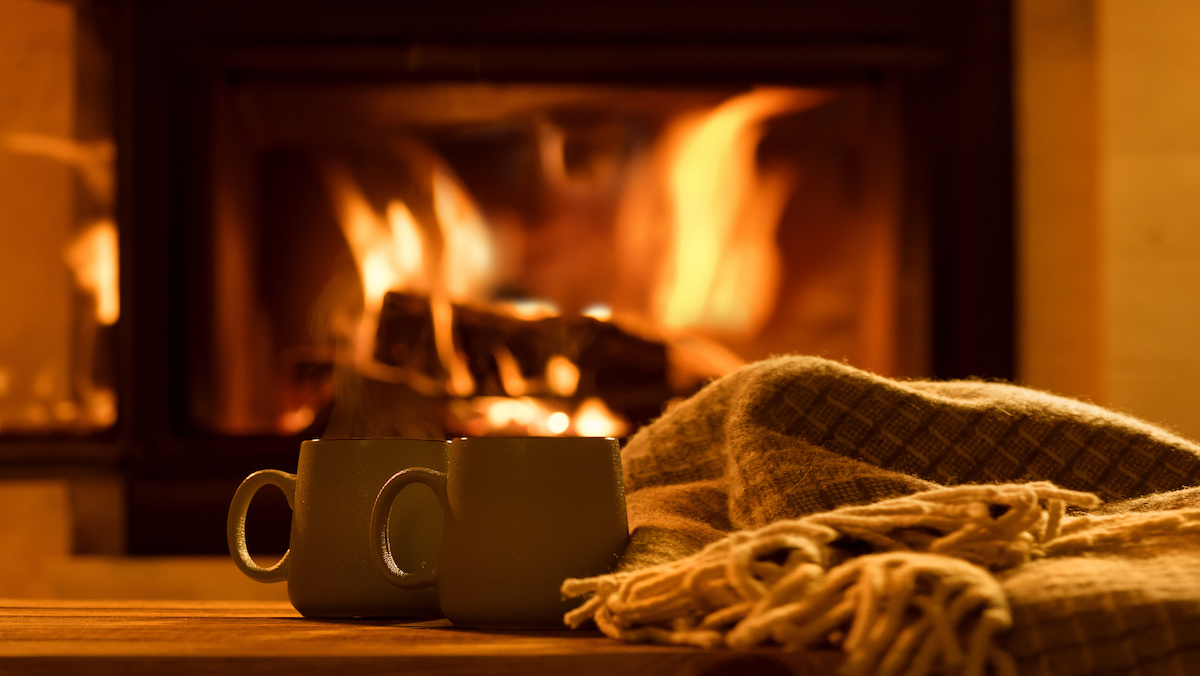



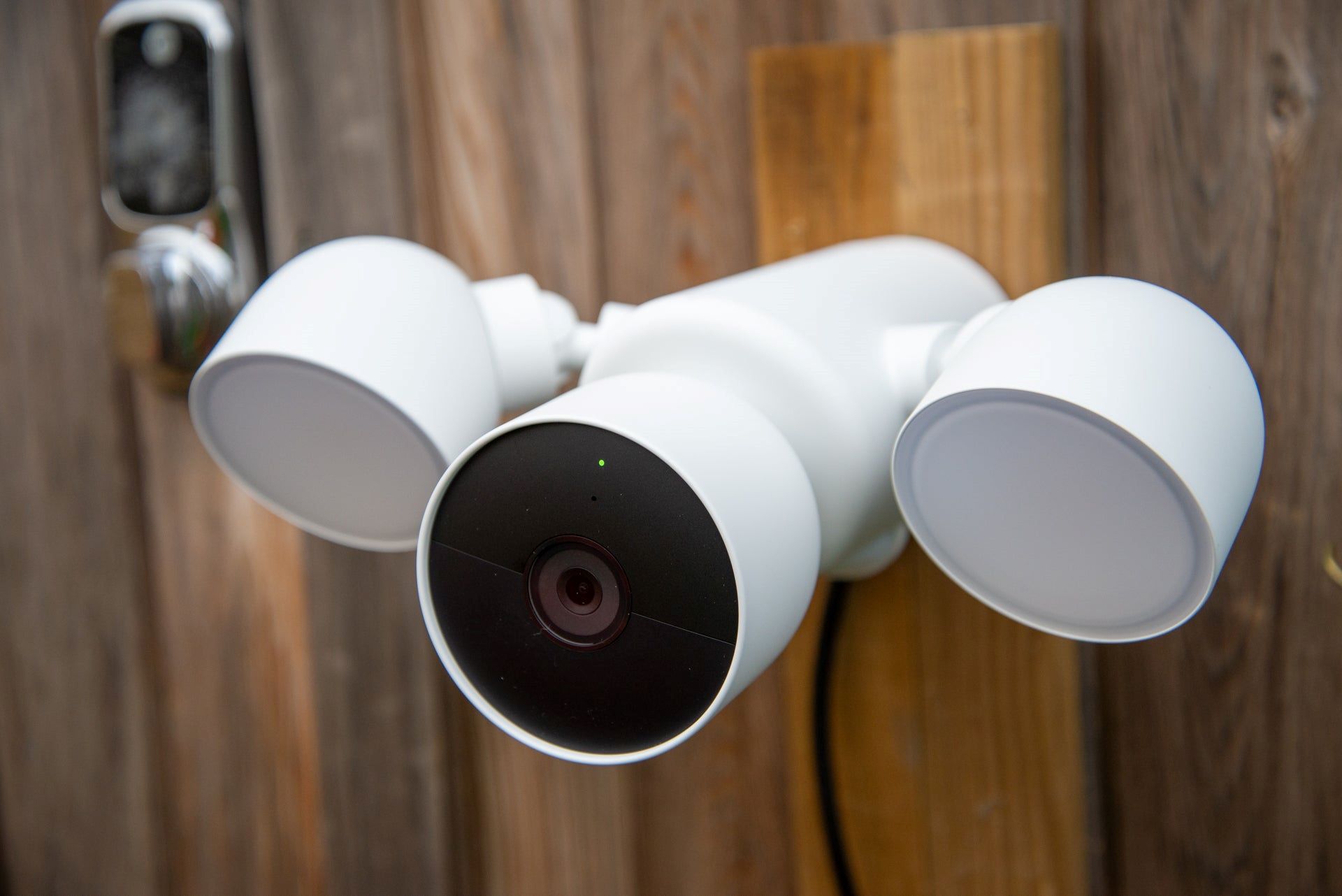
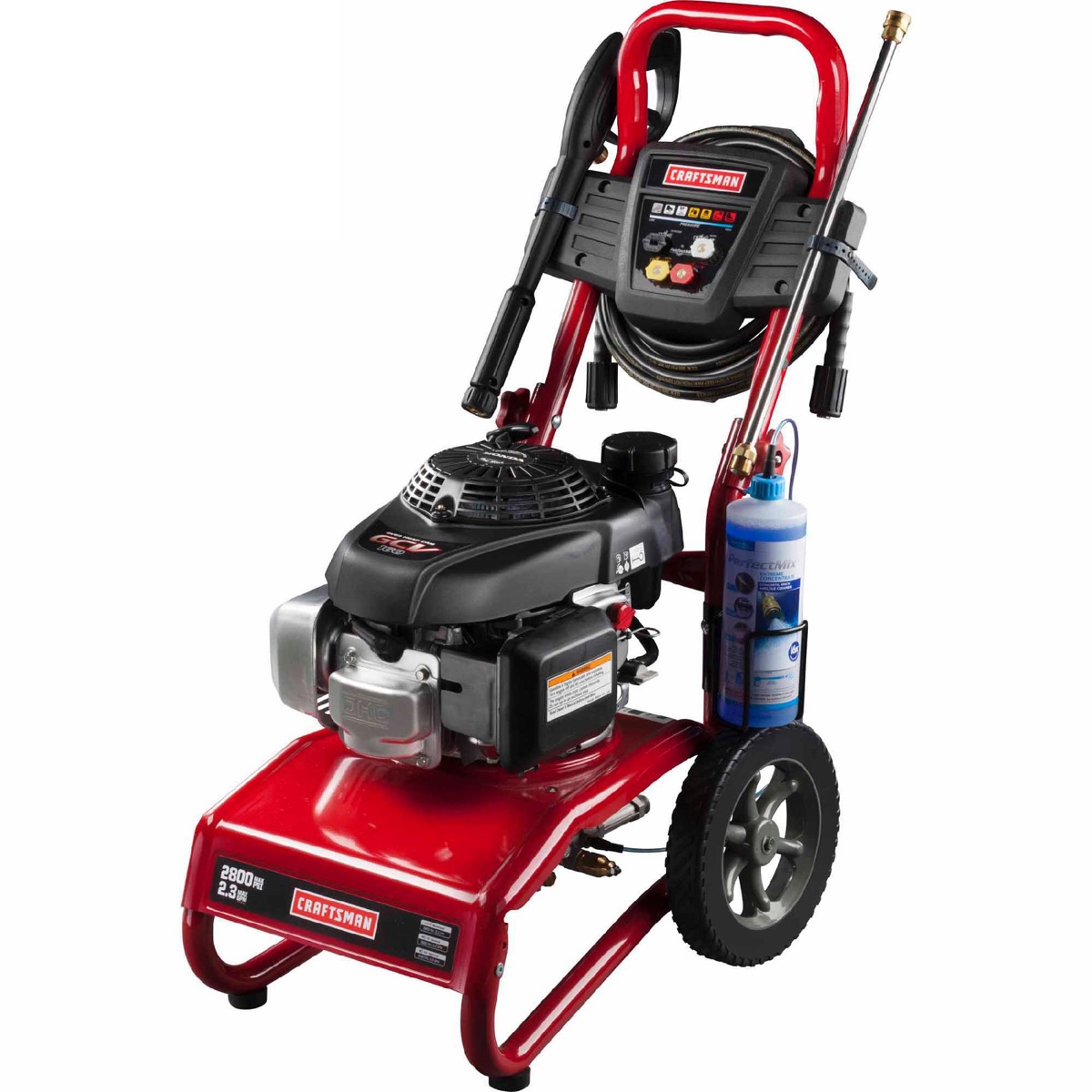
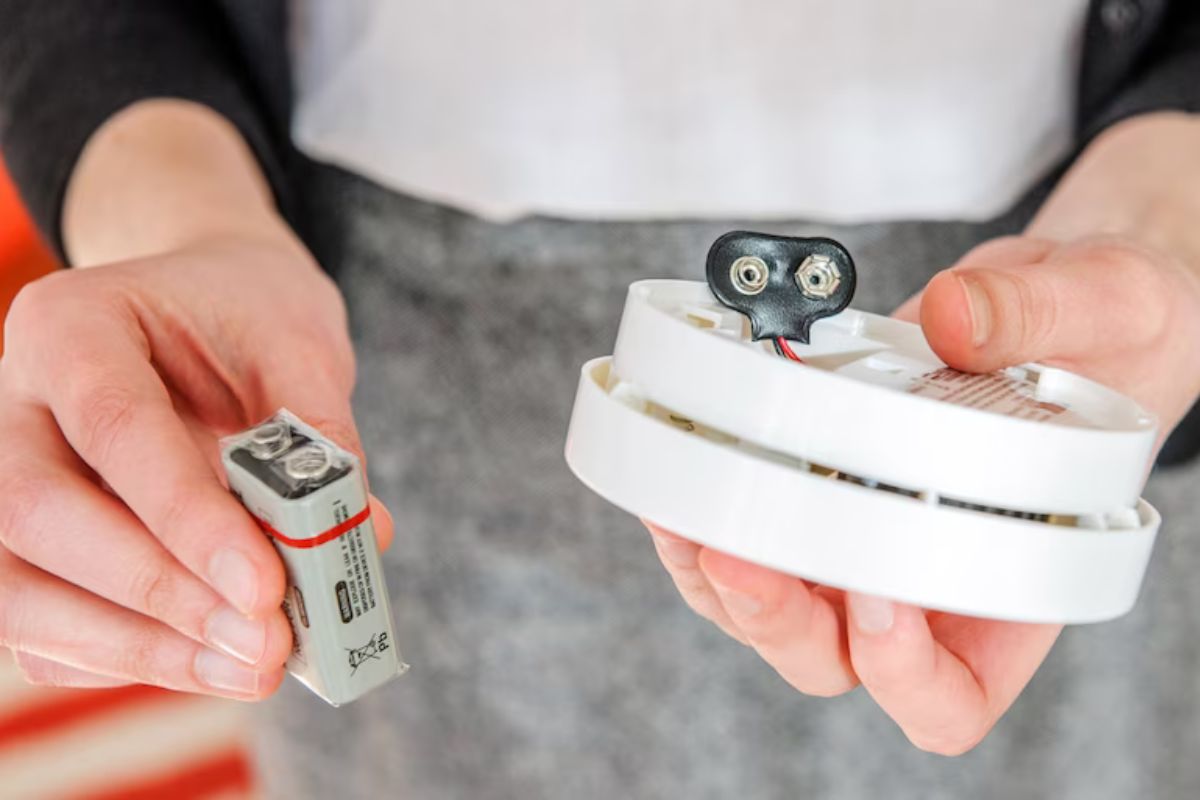
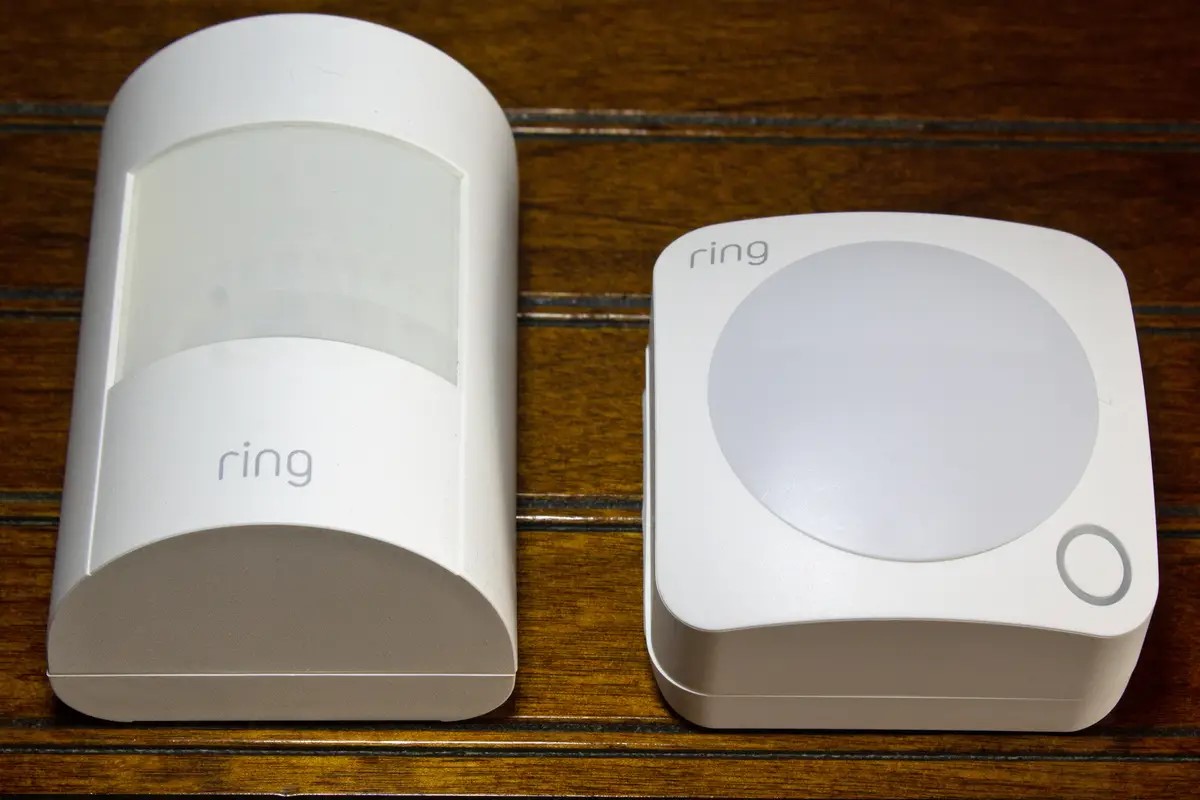
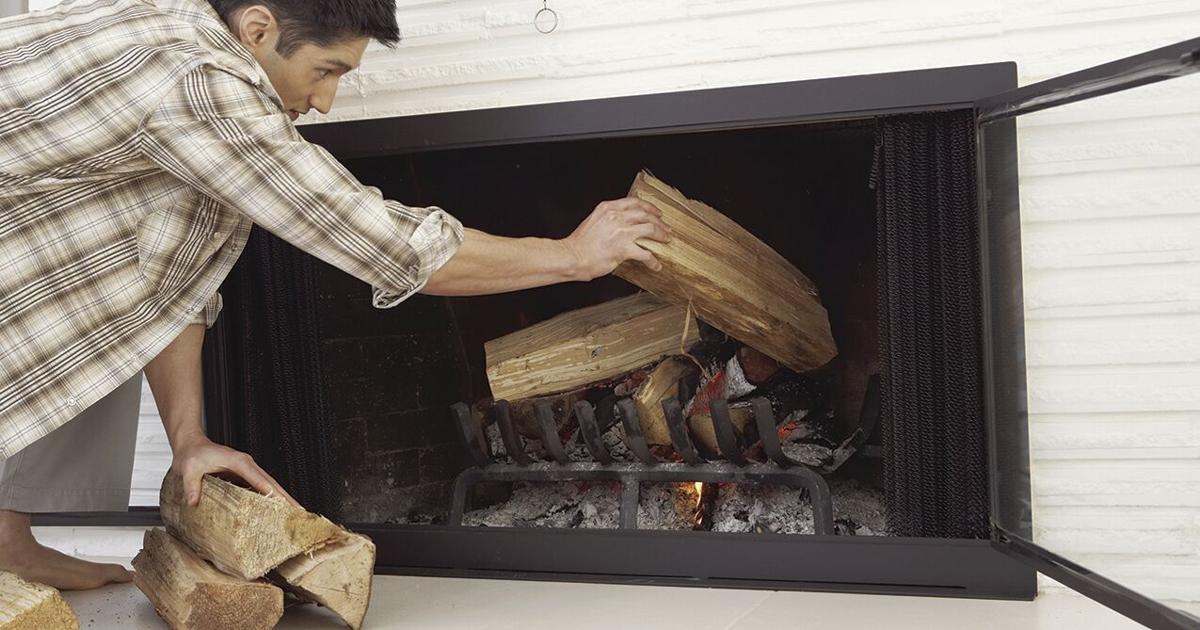
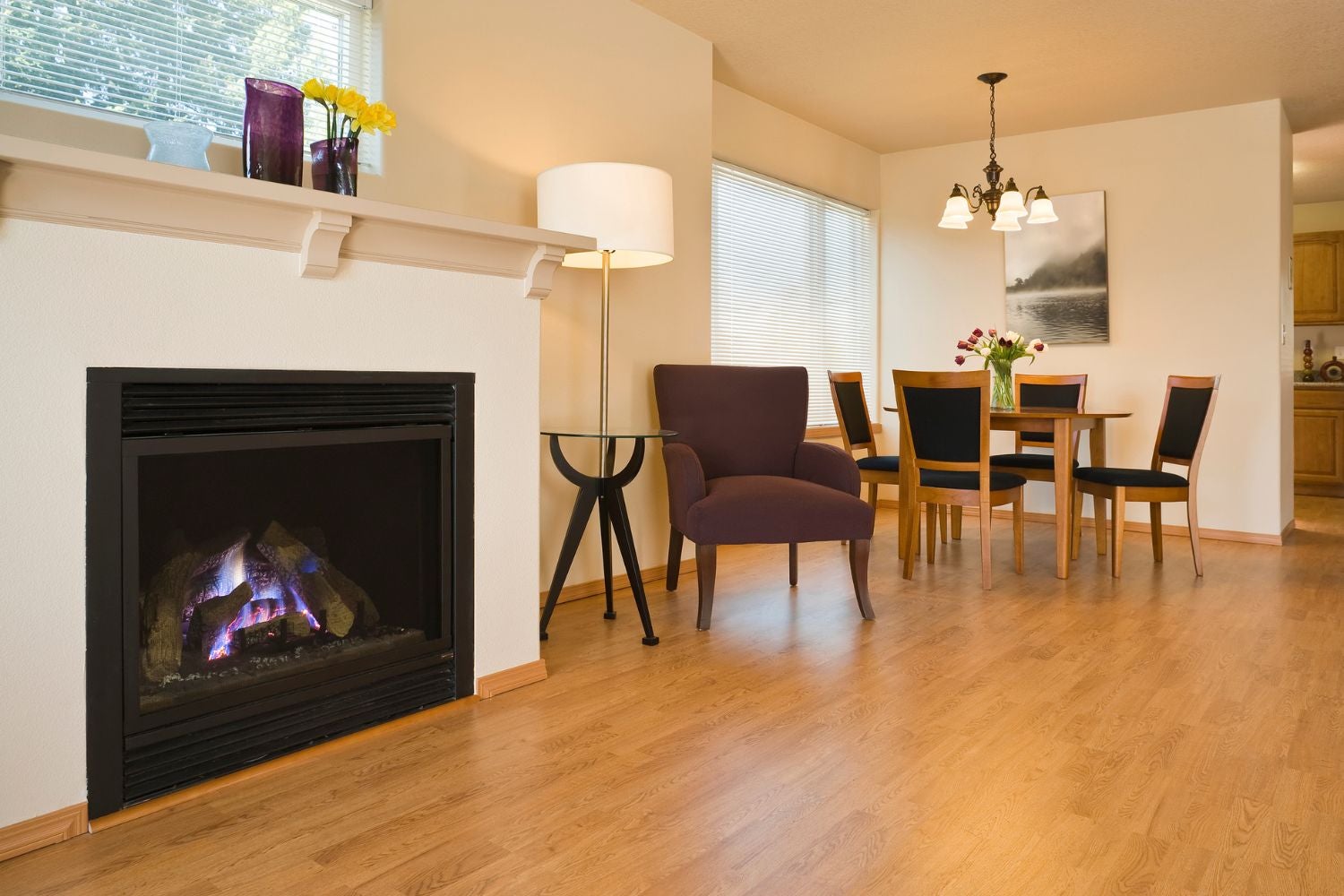
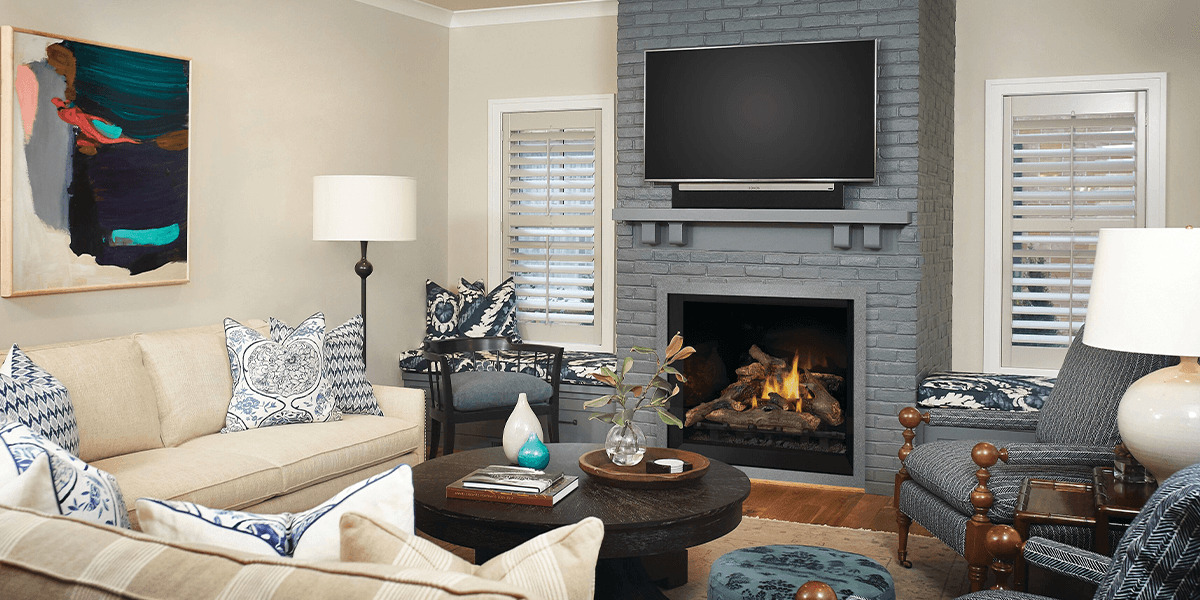

0 thoughts on “Why Does My Gas Fireplace Keep Going Out”